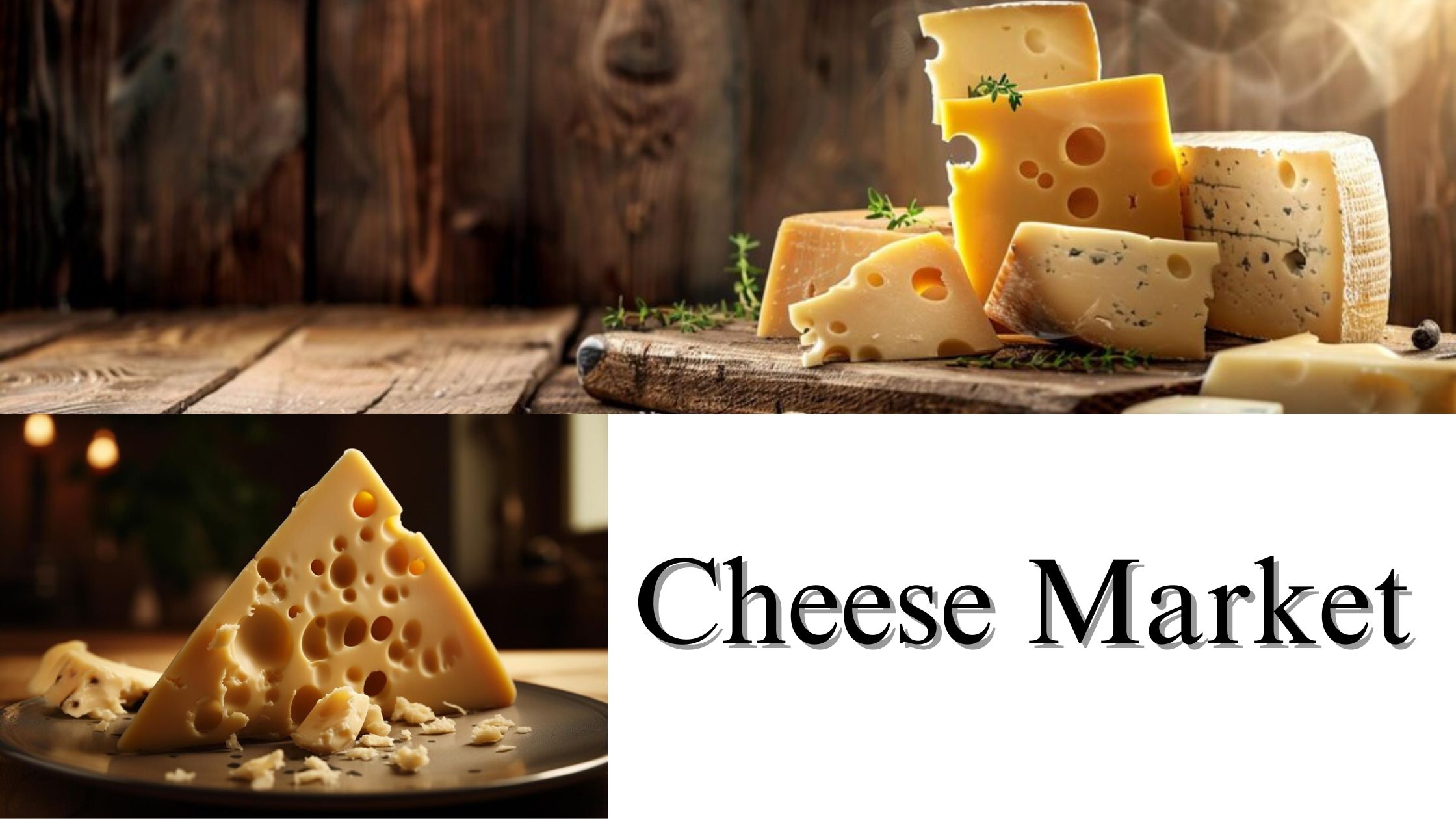 Schema + Rich Snippets – Dominate Search with Visual Results!
Schema + Rich Snippets – Dominate Search with Visual Results!
Cheese Market Size, Share, Trends, and Forecast to 2032
Written by Cruz Smith » Updated on: June 17th, 2025

The global cheese market was valued at USD 187.42 billion in 2023 and is projected to grow from USD 191.94 billion in 2024 to USD 287.12 billion by 2032, reflecting a compound annual growth rate (CAGR) of 4.61% over the forecast period.
The increase in cheese consumption is driven by its availability, versatility, and the rising popularity of ethnic cuisines such as Mexican and Italian, which heavily incorporate cheese. Mozzarella and cheddar are the most widely consumed varieties.
This information is based on Fortune Business Insights™ research report titled “Cheese Market, 2024-2032.”
Information Source: https://www.fortunebusinessinsights.com/cheese-market-104293
Segments:
Longer Shelf Life and Rising Demand for Natural Cheese to Drive Market Growth
Market Segmentation by Type:
The cheese market is divided into processed and natural cheese. Artisan producers focus on using herbs, flavors, fruits, spices, and nuts rather than artificial ingredients, boosting the demand for natural cheese. In contrast, processed cheese remains popular in developing regions such as South America, Asia Pacific, and the Middle East & Africa.
Market Segmentation by Source:
The market is split into plant-based and animal-based cheese. The plant-based segment includes options like cashew, soya, almond, and others, while the animal-based segment comprises cheese from cattle, camel, sheep, and goat. The animal-based segment is expected to dominate due to attractive packaging and longer shelf life. Meanwhile, the plant-based segment is projected to grow due to its variety of options.
Product Type Insights:
The market is categorized into feta, cheddar, parmesan, mozzarella, and others. The flavor and texture of cheese are influenced by the milk type and production process. Mozzarella is forecasted to hold the largest market share due to its extensive use in dishes like pizza, pasta, risotto, and enchiladas.
Form-Based Market Trends:
Cheese is available in spreadable, block, and other forms. Block cheese, which requires longer ripening and offers high nutritional value, commands a significant market share. It is available in hard and soft varieties. Spreadable cheese is gaining popularity for its convenience in applications like cakes, snacks, and sandwiches.
Distribution Channel Analysis:
The market distribution includes specialty stores, online retail, supermarkets/hypermarkets, and convenience stores. Supermarkets and hypermarkets lead as they offer a wide product range and often provide free samples.
The global cheese market is analyzed across various regions, including Europe, North America, Asia Pacific, South America, and the Middle East & Africa.

Report Coverage:
The report offers:
Major growth drivers, restraining factors, opportunities, and potential challenges for the market.
Comprehensive insights into the regional developments.
List of major industry players.
Key strategies adopted by the market players.
Latest industry developments such as product launches, partnerships, mergers, and acquisitions.
Drivers and Restraints:
Increasing Demand for Plant-based Cheese to Drive the Market Growth
Plant-based cheese, derived from cashew, soy, almond, and other non-dairy sources, is experiencing a surge in popularity driven by the rising trend of veganism and the growing demand for plant-based foods. This increased interest in vegan options and the expansion of plant-based product offerings are expected to significantly boost market growth for cheese during the forecast period.
However, the market may encounter challenges related to health concerns associated with casein, a protein found in dairy cheese. Casein allergy can cause issues such as acne, headaches, inflammation, and rashes, which could potentially hinder market growth.
Regional Insights:
Increasing Investments and Partnerships to Propel Market Growth in Europe
European consumers are increasingly seeking healthy foods to support their well-being, with a growing preference for organic and non-GMO products. This shift is positively impacting the cheese industry in the region.
In North America, the demand for nutritious and convenient food products is driving market growth. The region is a major market, with millennials' evolving snacking and dessert habits contributing to higher cheese consumption.
Competitive Landscape:
Launching of New Products by Key Players to Stay Competitive in the Market
Key industry players are utilizing a range of competitive strategies to foster business opportunities, including new product launches. These strategies are designed to enhance product reach, expand distribution channels, and support overall market growth and diversification.
Key Industry Development:
September 2021: Lactalis Canada introduced two direct-to-consumer platforms, DairyMarketCulinary.ca. and Cheeseworld.ca for cheese and dairy.
List of Key Players Mentioned in the Report:
The Kraft Heinz Company (U.S.)
Fonterra Co-operative Group Limited (New Zealand)
Arla Foods amba (Arla Foods Group) (Germany)
FrieslandCampina (Netherlands)
Saputo Inc. (Canada)
Lactalis Ingredients (France)
Wensleydale Creamery (U.K.)
Dairy Farmers of America, Inc. (U.S.)
SAVENCIA SA (France)
Norseland Ltd (Tine Group) (U.K.)
Note: IndiBlogHub features both user-submitted and editorial content. We do not verify third-party contributions. Read our Disclaimer and Privacy Policyfor details.
Copyright © 2019-2025 IndiBlogHub.com. All rights reserved. Hosted on DigitalOcean for fast, reliable performance.













